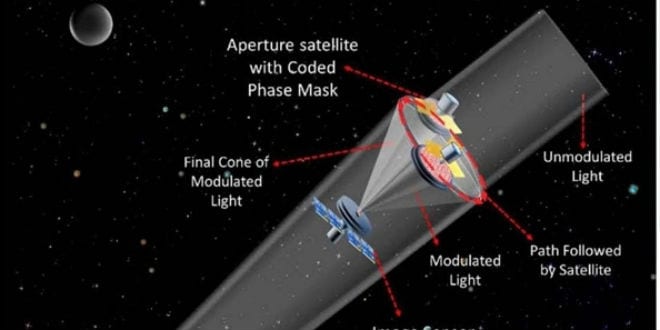With the universe so vast, it is clear that mankind will not be able to visit – or even photograph – more than an infinitesimal part of it. Yet researchers at Ben-Gurion University of the Negev in Beersheba have now have developed a satellite imaging system that they say is about to revolutionize photography from space.
We have always thought that the way to improve the image resolution, including photography, of distant celestial bodies is to use lenses – or mirrors – of a giant telescope, sometimes several meters in diameter.
The researchers have developed a new satellite-imaging system that stands to revolutionize the economics and imagery available from space-based cameras and even earth-based telescopes.
Doctoral student Angica Bulbul, led by Prof. Joseph Rosen of the department of electrical and computer engineering, found that you don’t need the entire telescope to get the right images. They developed a satellite imaging system – a virtual aperture (opening) that is much larger than the physical interface of the system and is realized by scanning, over time, the physical space.
The revolutionary innovation in this system is that the physical interface scans only the scope of the space, and yet the system achieves excellent resolution as if the entire area had been scanned. They suggested that several nanosatellites the size of milk cartons arranged in a spherical configuration could work in unison to collect imagery combining imagery from parts of each lens.
The resolution of details in a photographed image is the advantage of the synthetic phase. Because the size of the smallest item that can be seen in the picture is inversely proportional to the dimensions of the camera’s opening, the larger the synthetic aperture size, the easier it is to see the smallest details.
Bulbul says the team found that one didn’t need the entire telescope lens to obtain the right images,” Bulbul said. “Even by using a partial aperture area of a lens, we managed to obtain similar image resolution to the full aperture area of mirror/lens-based imaging systems. Consequently, the huge cost, time and material needed for gigantic traditional optical space telescopes with large curved mirrors can be slashed.”
Bulbul, originally from India, wrote the article together with Rosen and Dr. Vijakumar Anand – a post-doctoral student who also comes from India – who focused on a system called synthetic margin with revolving telescopes.
The system – called ”Synthetic Marginal Aperture with Revolving Telescopes” or SMART, is based on an array of small sub-dividers arranged along the perimeter of the large synthetic aperture. To show off its capabilities, the team built a miniature work model with an array of sub-apertures that simulates the large telescope to study the image resolution of the target.
In an article published in the December issue of the leading journal Optica (published by the Optical Society of America), the team maintained that some previous assumptions were incorrect. It was always thought that the way to improve the image resolution was using a giant telescope and its lenses or mirrors.
But in this study, said Bulbul, “we found that you do not need the entire telescope to get the right images. Using just a small portion of a lens, as low as 0.43%, of the surface of the aperture, we were able to achieve an image resolution similar to that achieved by the full-frame, lens-based or concave mirror systems. Thus, the enormous cost, weight and material needed to construct space telescopes with huge mirrors can be significantly reduced,” she added.
Imaging equipment that will produce high-quality images will be sent to space using small satellites, almost the size of a large milk carton,” she added. “This is an invention that completely changes the costs of space exploration, astronomy, aerial photography and more.”




